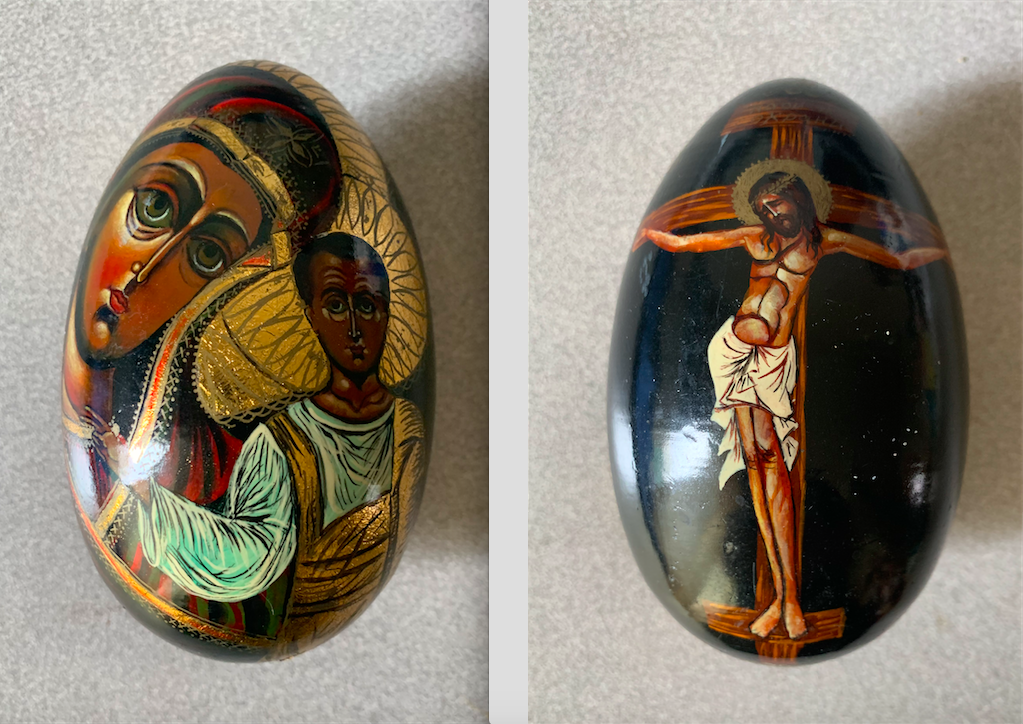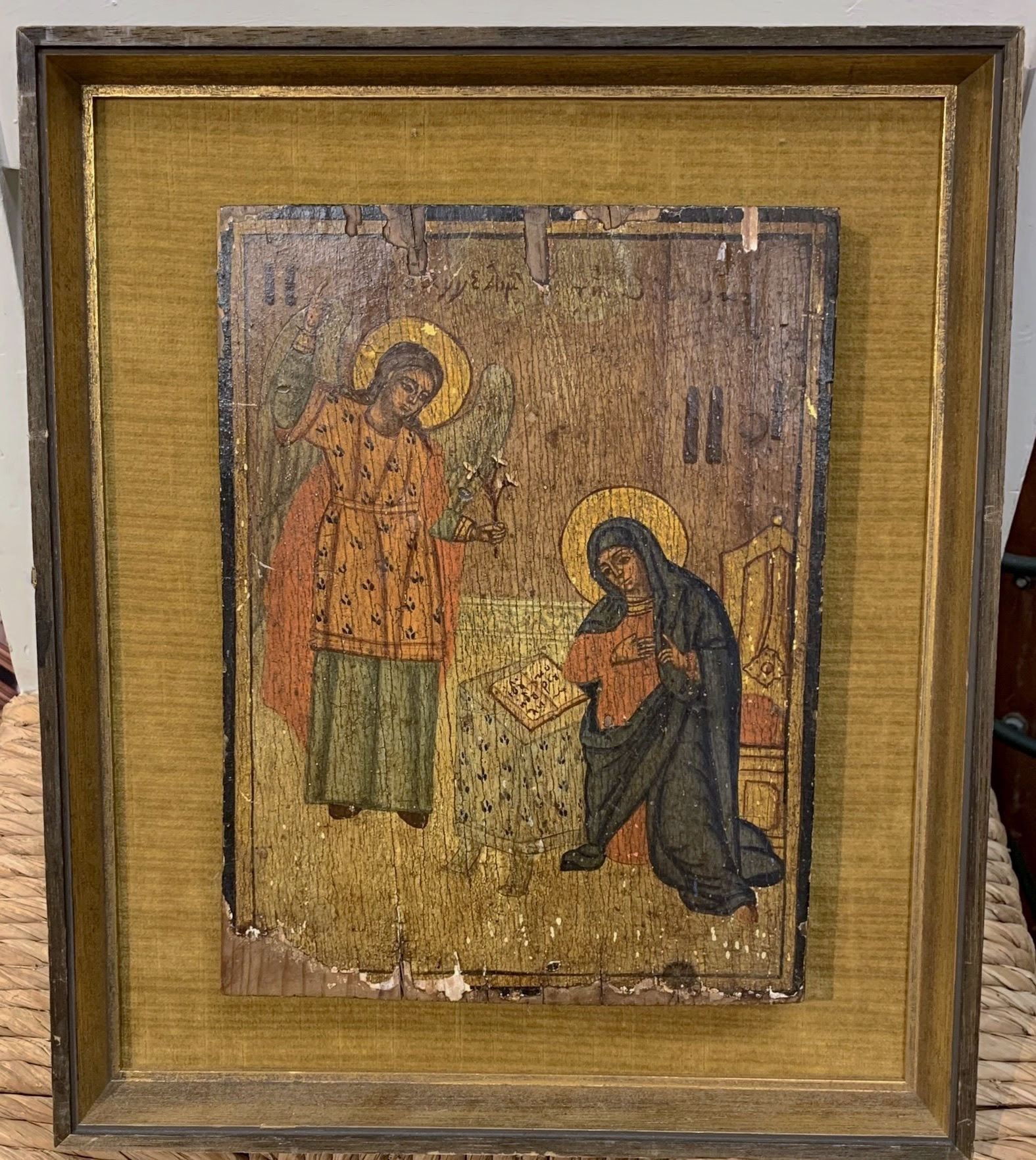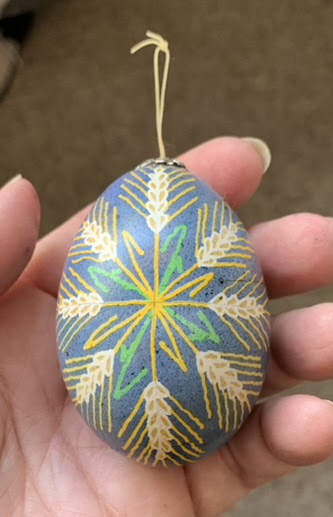Happy Easter!Queen B celebrates this Easter with beautiful eggs from some of our sales. In the U.S. Sunday, April 9, is officially Easter, when Western Christian churches celebrate. But these works of art are from Eastern Orthodox Christianity, which uses a different calendar so their Easter is Sunday, April 16th. Easter (also called Pascha or Resurrection Sunday) commemorates the resurrection of Jesus Christ, but eggs, along with the Easter Bunny, were originally fertility symbols from earlier European pagan celebrations that welcomed the end of winter and the start of spring.
This first Easter egg is wooden and painted with both the birth of Jesus and his death. It is heavily decorated with a metallic ‘gold’ leaf in the style of the religious icons that decorate Eastern Orthodox churches. Much larger, the church icons use real gold and portray holy personages, saints, and scenes from the Bible and the life of Christ. The Greek word for Icon, Αγιογραφία; means Holy or Heavenly (Άγιο) plus Γράφω, ‘to write’, so icons tell the stories of holy events. They are regarded as ‘windows into heaven’ and have remained unchanged since Byzantine times.
Small icons are made for both devotees and tourists, so they too are found at our sales. These two represent The Annunciation (the Angel telling the Virgin Mary that she has been chosen) and Mary with the baby Jesus. Like the church icons, both are gilt on wood.
Eastern Orthodoxy is the majority religion in much of Eastern Europe, including Russia, Ukraine, Romania, Belarus, Greece, Serbia, Bulgaria, Moldova, Georgia, North Macedonia, Cyprus and Montenegro and is also practiced by many in Central Asia and the Mediterranean. In the U.S. there are 3 to 6 million Eastern Orthodox practitioners. |

This basket of eggs showcases a famous Ukrainian folk art, Pysanka, in which layers of fine detail are applied to blown eggs using a wax resist. The oldest pysanka (a goose egg) was excavated in the city of Lviv and dates to around the 15th century. Like the icons, the word pysanka comes from pysaty (писати), meaning ‘to write’. Similar crafts are also practiced in other Slavic countries.
These spectacular eggs take hours to make. After each wax resist design dries, the egg is dyed another color, leaving the color protected by the resist unchanged, while altering the overall surrounding background. The dyes are transparent and additive, so light colors must be done first, followed by dark. The buildup creates the final base color and requires care to avoid producing a sludgy shade. If you look at each egg, you can work out the order in which resist and dyes were applied, with ‘eggshell white’ always being first. The technique is similar to batik (used to decorate cloth) and uses similar tools. There are hundreds of motifs with symbolic meanings, some dating back to pre-Christian, Paleolithic times. The spiral was believed to protect against evil spirits by trapping them. The dots can be seeds or the Virgin Mary’s tears. However, the wheat stalks seen on two of these eggs are modern designspopular among the descendants of Ukrainian immigrants living in the U.S. They are not found on traditional pysanky, so we can surmise that these eggs were made locally.
In countries like Poland and Romania, the craft is made easier and more durable by painting on wooden eggs. Although the same attention to detail is required, the formidable calculation involving multiple layers of dyes has been eliminated. How ever you celebrate your spring renewal, do it with us at QBO! |





